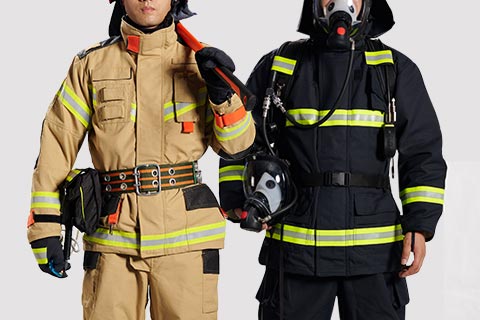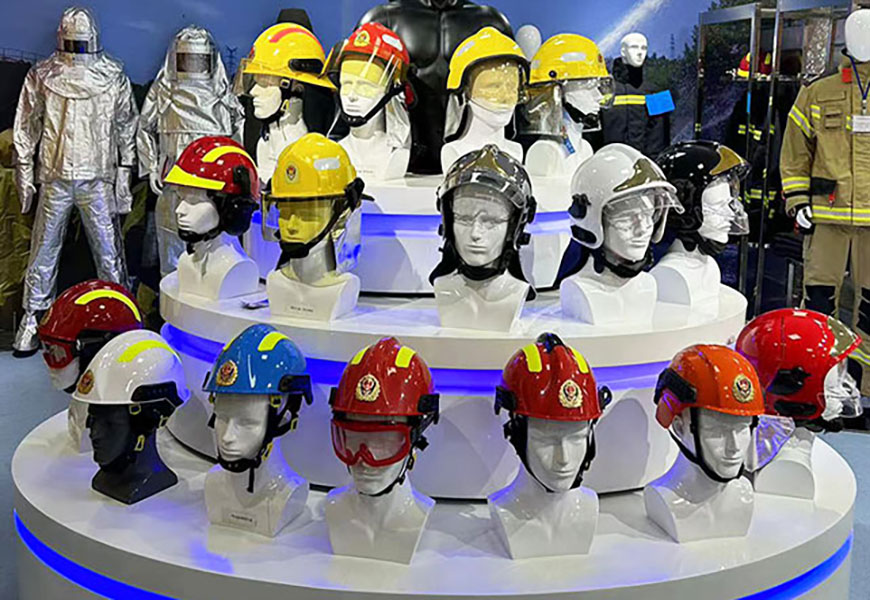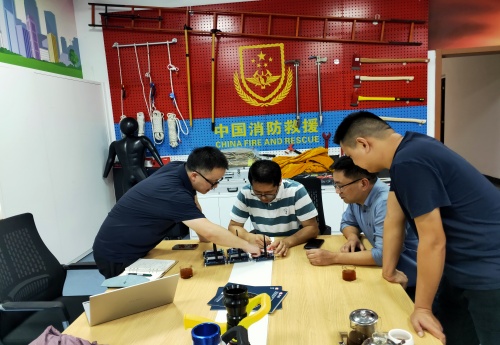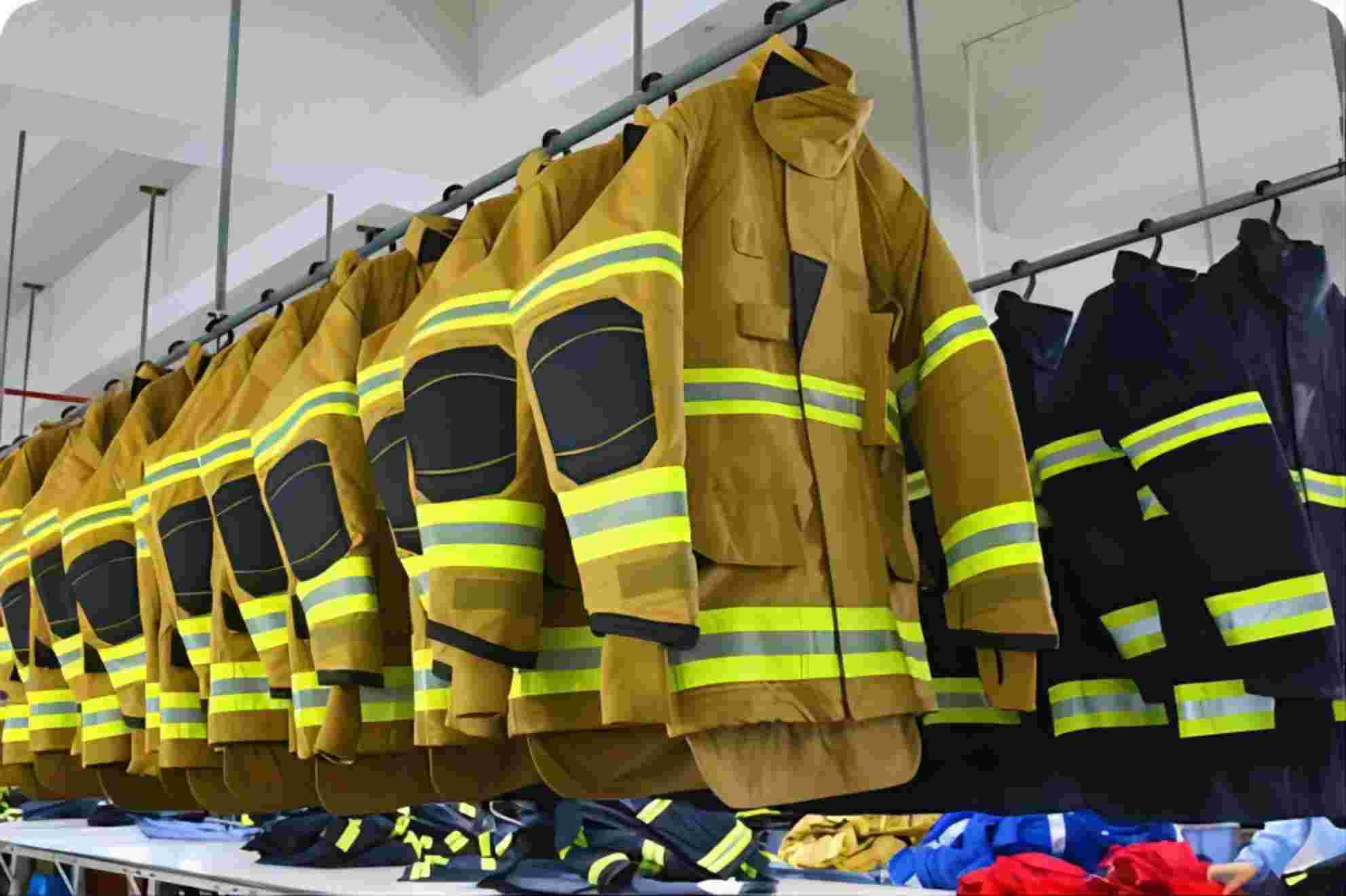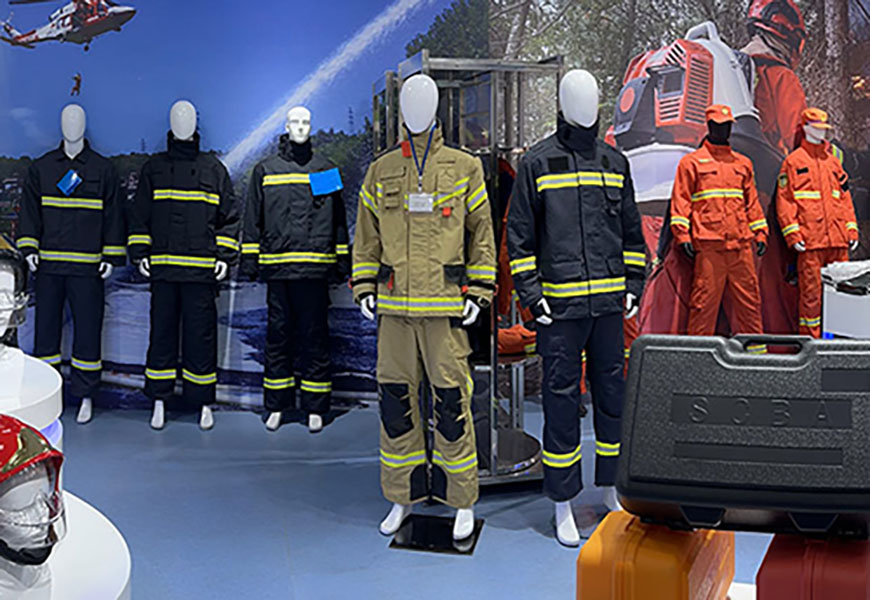Fire Helmets: The Unseen Heroes Behind Fire Safety
JIU PAI is a professional fire equipment supplier, it is crucial to highlight the importance of fire helmets in ensuring the safety and effectiveness of firefighters. Fescue & fire helmets are not just a piece of gear; they are in the first line of defense for firefighters, protecting them from heat, falling debris, electrical hazards, and physical impacts during rescue operations. In this article, we will delve into the core features, technical specifications, real-world applications, and future innovations of fire helmets, while also exploring their critical role in modern fire safety systems and the evolving demands of emergency response.
Infrared Thermal Imaging: Miniaturized cameras mounted on the visor to detect fire helmets & hardhats sources through smoke, with AI algorithms highlighting human shapes in debris.
Emergency Oxygen Systems: Compact oxygen tanks (200L capacity) for toxic environments, activated via a fire fighter helmet-mounted valve with 15-minute autonomy.
Biometric Sensors: Monitoring vital signs like heart rate and body temperature to prevent heatstroke. Data is transmitted to incident commanders via mesh networks.
Sustainability and Cost
Recyclable composites and modular designs (e.g., replaceable shock-absorption liners) are gaining traction, reducing long-term costs by 30% compared to traditional models. The 2023 Global Fire Helmet Market Report projects a 7.2% CAGR growth through 2030, driven by Asia-Pacific infrastructure development and stricter EU safety regulations.
Training and Simulation
Virtual reality (VR) helmets now recreate fire scenarios for training, with haptic feedback simulating heat waves and debris impacts. Trainees using VR systems showed 40% faster decision-making skills in live drills compared to conventional training.
The human factor remains critical: even the most advanced fire helmet cannot compensate for inadequate training. Fire departments worldwide are now allocating 15-20% of PPE budgets to simulation-based training programs, creating a symbiotic relationship between technological advancement and skill development.
By prioritizing both cutting-edge technology and evidence-based maintenance practices, the fire safety industry can ensure that these "unseen heroes" continue to protect those who protect us, adapting to new challenges from lithium-ion battery fires to climate-change-driven megafires.
Understanding Fire Helmets
Fire helmets are an essential component of a firefighter's personal protective equipment (PPE). Beyond their symbolic significance, they serve as a multifunctional shield engineered to withstand extreme conditions.Material Composition
JIU PAI odern fire helmets are typically constructed from high-strength polymers (e.g.polycarbonate) or advanced composites like carbon fiber-reinforced thermoplastics. These materials balance lightweight design with exceptional durability, offering resistance to temperatures exceeding 500°C and impacts equivalent to a 10 kg object falling from 1 meter . Recent studies highlight that material degradation over time—even in visually intact rescue helmets—can significantly reduce protective capabilities. For example, shells made via injection moulding may become brittle after 4 years of use, compromising energy absorption by up to 30% under low-impact conditions (30 J) .Design Features
The firefighter's structure integrates multiple layers of protection:- Outer Shell: Deflects debris and dissipates heat. Advanced models incorporate reflective striping for visibility in low-light environments, meeting ISO 20471 high-visibility standards.
- Buffer Layer: Absorbs shock through materials like expanded polystyrene (EPS) foam, redistributing impact forces across a wider area. Some manufacturers are experimenting with non-Newtonian fluids in this layer, which harden upon impact to provide adaptive protection.
- Face Shield: Made of heat-resistant polycarbonate with anti-fog coatings to maintain visibility in high-humidity environments. The latest designs feature auto-darkening visors that adjust to flashover conditions within 0.1 seconds.
- Chin Strap: Secures the firefighter's helmet with quick-release buckles for rapid removal in emergencies. Straps now integrate RFID tags for personnel tracking in collapse scenarios.
Key Specifications and Performance Metrics
Fire helmets must comply with stringent international standards, including China's GA 44-2004, the EU's EN 443, and NFPA 1971. Key performance criteria include:- Impact Resistance: Wildland fire helmets must withstand vertical impacts of 150 J without transmitting excessive force to the wearer's skull. Tests simulate scenarios like falling bricks or collapsing structures using specialized rigs like the CEAST 9350 Drop Tower.
- Thermal Protection: Face shields are tested against direct flame exposure (10 seconds at 500°C) to ensure minimal heat transfer. The latest EN 443:2020 standard requires fire fighting helmets to maintain structural integrity after 15 minutes at 250°C ambient temperature.
- Electrical Insulation: Critical for protecting against live wires, super lightweight fire helmets must resist 10,000 volts for 1 minute without breakdown. Composite shells with <1 S/cm conductivity outperform traditional materials in high-voltage environments.
- Comfort and Ergonomics: Weight is capped at 1.5 kg, with adjustable headbands and moisture-wicking liners to reduce neck strain. A 2024 survey of 500 firefighters revealed that helmets exceeding 1.2 kg increased neck fatigue by 27% during 8-hour shifts.
Maintenance and Lifespan
Regular maintenance is vital. Research shows that super structural fire helmets used for 4 years without proper care exhibit a 40% reduction in energy absorption capacity, even if visually undamaged. This underscores the need for periodic laboratory testing beyond visual inspections. Leading fire departments now implement:- Annual X-ray scans to detect micro-cracks in composite shells.
- Foam density tests using ultrasonic sensors to verify buffer layer integrity.
- Thermal cycling chambers that simulate 5 years of temperature stress in 72 hours.
Real-World Applications and Case Studies
Forest Fire Rescue in China (2023)
During a large-scale forest fire, firefighters equipped with HEROS-titan rescue & fire helmets (1.3 kg, composite shell) reported enhanced mobility and protection. The fire helmets’ integrated buffer layer prevented concussions despite frequent debris impacts, while their thermal shielding allowed teams to operate within 2 meters of flames for critical rescue windows . Post-incident analysis showed a 60% reduction in head injuries compared to crews using older helmet models.Urban Firefighting in New York
A 2024 study documented how fire helmets with wireless communication modules (as proposed in Li et al.’s 2010 prototype) enabled real-time coordination between firefighters in low-visibility environments, reducing response times by 25% . The system’s bone conduction technology allowed clear audio transmission even in 110 dB environments.Industrial Fire in Germany (2022)
At a chemical plant blaze, fire fighting helmets with integrated gas sensors detected hydrogen sulfide leaks at 5 ppm—10 times below the OSHA permissible limit—triggering evacuation alarms and preventing mass poisoning. This incident accelerated EU mandates for multi-gas detectors in all industrial fire helmets by 2025.Future Innovations and Market Trends
Multifunctional Integration
Emerging designs aim to integrate:Infrared Thermal Imaging: Miniaturized cameras mounted on the visor to detect fire helmets & hardhats sources through smoke, with AI algorithms highlighting human shapes in debris.
Emergency Oxygen Systems: Compact oxygen tanks (200L capacity) for toxic environments, activated via a fire fighter helmet-mounted valve with 15-minute autonomy.
Biometric Sensors: Monitoring vital signs like heart rate and body temperature to prevent heatstroke. Data is transmitted to incident commanders via mesh networks.
Sustainability and Cost
Recyclable composites and modular designs (e.g., replaceable shock-absorption liners) are gaining traction, reducing long-term costs by 30% compared to traditional models. The 2023 Global Fire Helmet Market Report projects a 7.2% CAGR growth through 2030, driven by Asia-Pacific infrastructure development and stricter EU safety regulations.
Training and Simulation
Virtual reality (VR) helmets now recreate fire scenarios for training, with haptic feedback simulating heat waves and debris impacts. Trainees using VR systems showed 40% faster decision-making skills in live drills compared to conventional training.
Conclusion
Fire helmets are evolving from passive protective gear to active life-saving systems. As material science and IoT technologies advance, future fire helmets will likely incorporate AI-driven hazard alerts and augmented reality interfaces projecting escape routes through smoke. However, manufacturers must balance innovation with rigorous adherence to safety standards and maintenance protocols to ensure reliability in life-threatening scenarios.The human factor remains critical: even the most advanced fire helmet cannot compensate for inadequate training. Fire departments worldwide are now allocating 15-20% of PPE budgets to simulation-based training programs, creating a symbiotic relationship between technological advancement and skill development.
By prioritizing both cutting-edge technology and evidence-based maintenance practices, the fire safety industry can ensure that these "unseen heroes" continue to protect those who protect us, adapting to new challenges from lithium-ion battery fires to climate-change-driven megafires.
Next Article:
Last Article:
Request A Quote
Related News
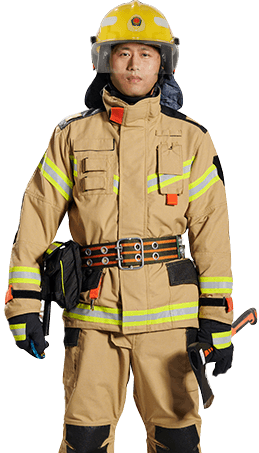
Quick Consultation
We are looking forward to providing you with a very professional service. For any
further information or queries please feel free to contact us.

